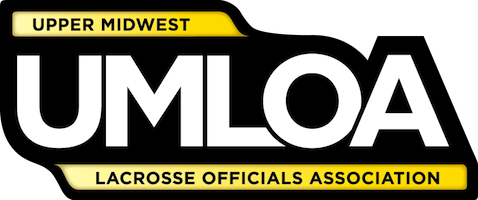Rule 6—Technical Fouls
Coaches on the field
Coaches are permitted on the field only at halftime, to attend to an injured player, or to warm up a goalie. Any other time the coach is on the field is technically a conduct foul. Any other time the coach is on the field--including timeouts--officials should politely remind the coach that he cannot be on the field.
If the coach is on the field and it is a problem (e.g., coach interferes with the play or the officials, coach is on the field complaining about a call), the officials should call the conduct foul.
Proper application of the conduct foul
Some coaches and officials mistakenly believe that a conduct foul is a 30-second penalty. It is not. A conduct foul by Team B is a technical foul: loss of possession to Team A, unless Team A is in possession, in which case then it is a 30-second penalty.
Throwing sticks
It is at least illegal procedure to throw a stick (which could be a loss of possession or a 30-second penalty, depending on the status of the ball). This is one of those issues where you should probably not call a penalty the first time you see it; instead, try to educate the players and coaches. Make sure they know that throwing sticks is illegal, and make sure the coach knows that they have been warned. If it continues to happen during the same game, then a technical foul may be in order.
Note that it is unsportsmanlike conduct to throw the stick at the ball during play or to throw it at an opponent.
Stalling
A stall warning can and should be issued in high school, 14U, and 12U games if the offensive team is keeping the ball from play (which most commonly happens when the offensive team is man-down). The stalling warning in the last two minutes is automatic for the team in the lead.
In general, it is better for the officials to give the “Get it in!” warning when Team A has possession outside of the attack area and then give them 10 seconds to do so; this will always be followed by “Keep it in!” when the ball enters the attack area (whether it is loose or in possession). Otherwise, the team may be in the process of running or passing the ball out when the “Keep it in!” warning comes. However, in some situations you may need to use “Keep it in!” if they are not bringing the ball out.
If A1 has possession in the attack area, a stall warning cannot be issued unless a Team B player is within 5 yards of A1.
A team warned for stalling in possession in the attack area cannot be penalized for stalling. Once a team is warned (“Keep it in!”), it’s a turnover if a player in possession steps on or over the attack area line or if a loose ball leaves the attack area other than on a shot or a deflection by the defense. The stall warning remains in effect until a goal is scored, the defense gains possession (unless a flag is down, in which case the warning remains), or the period ends resulting in a face-off.
“Playing with the free hand”
There is actually no reference to “playing with the free hand” in the rule book. In general, such actions will be an illegal hold, an illegal push, or a ward.
